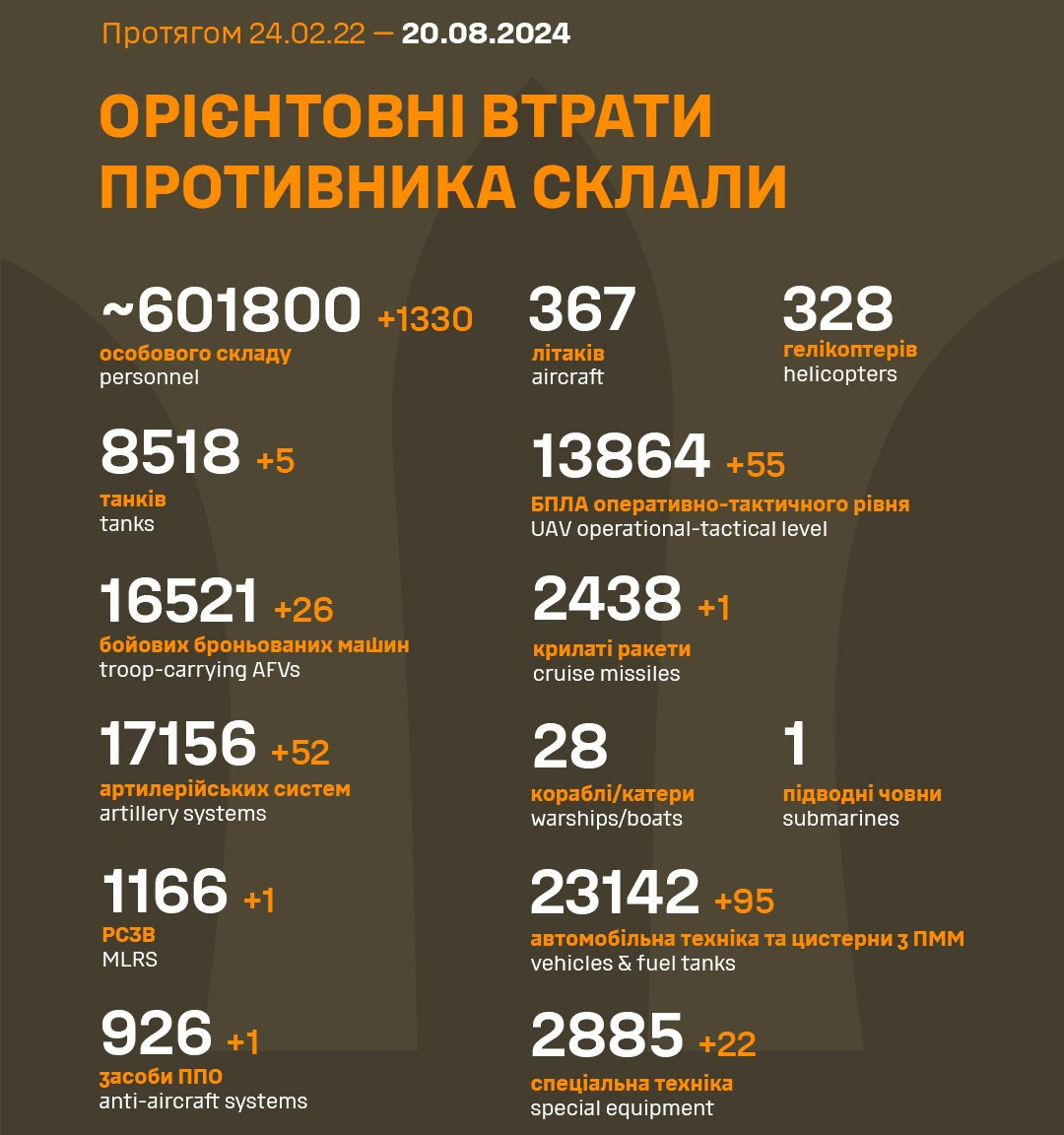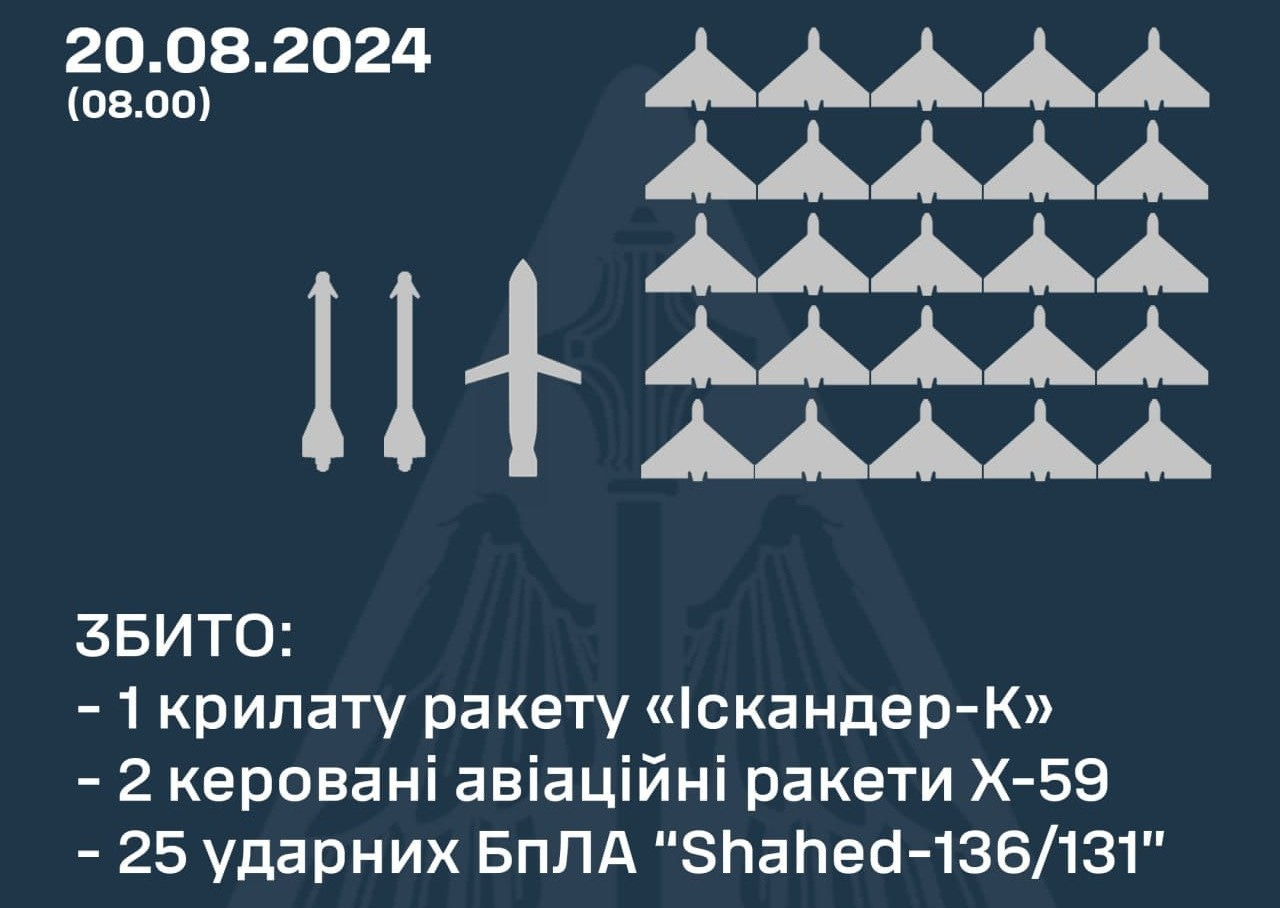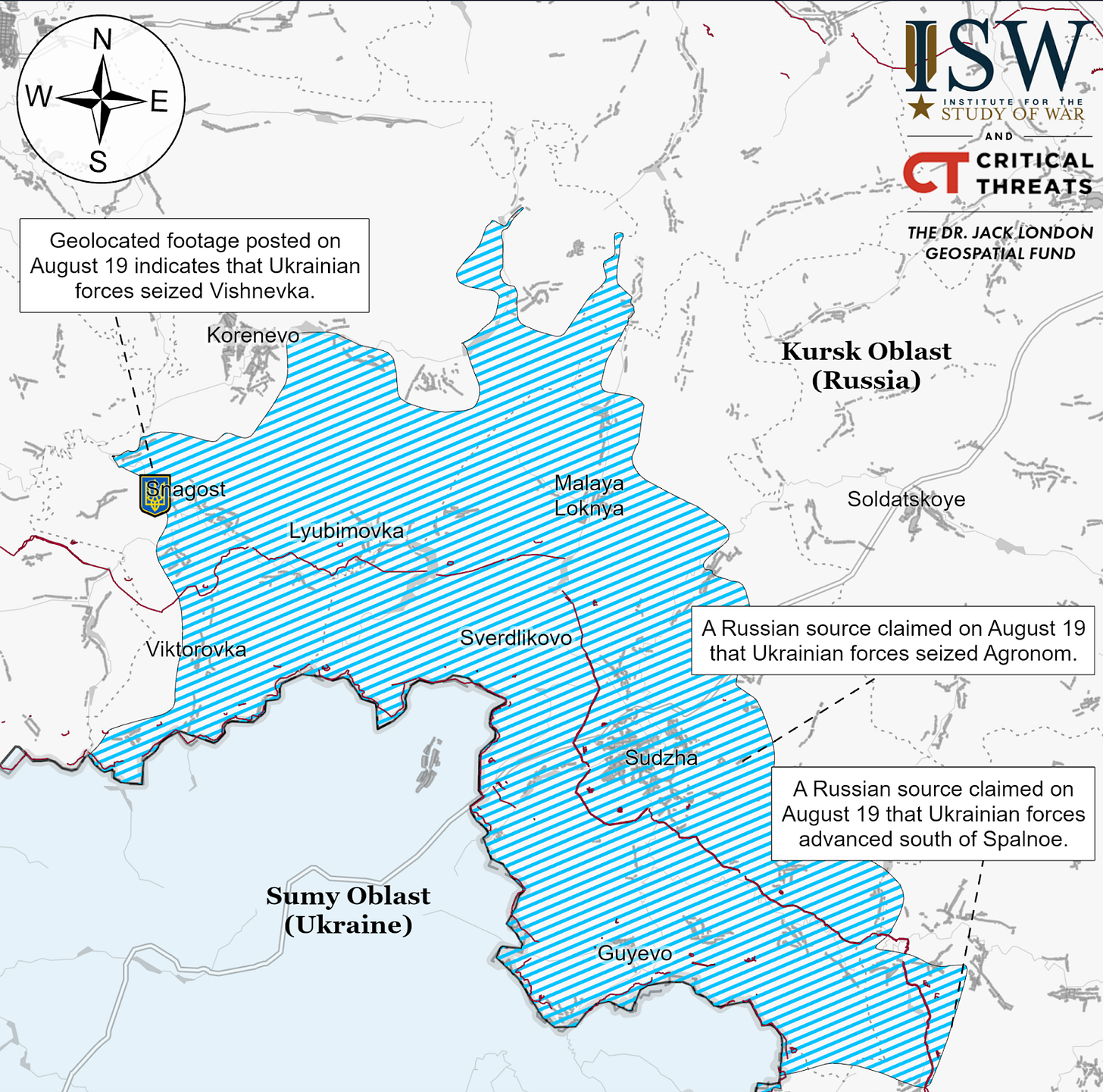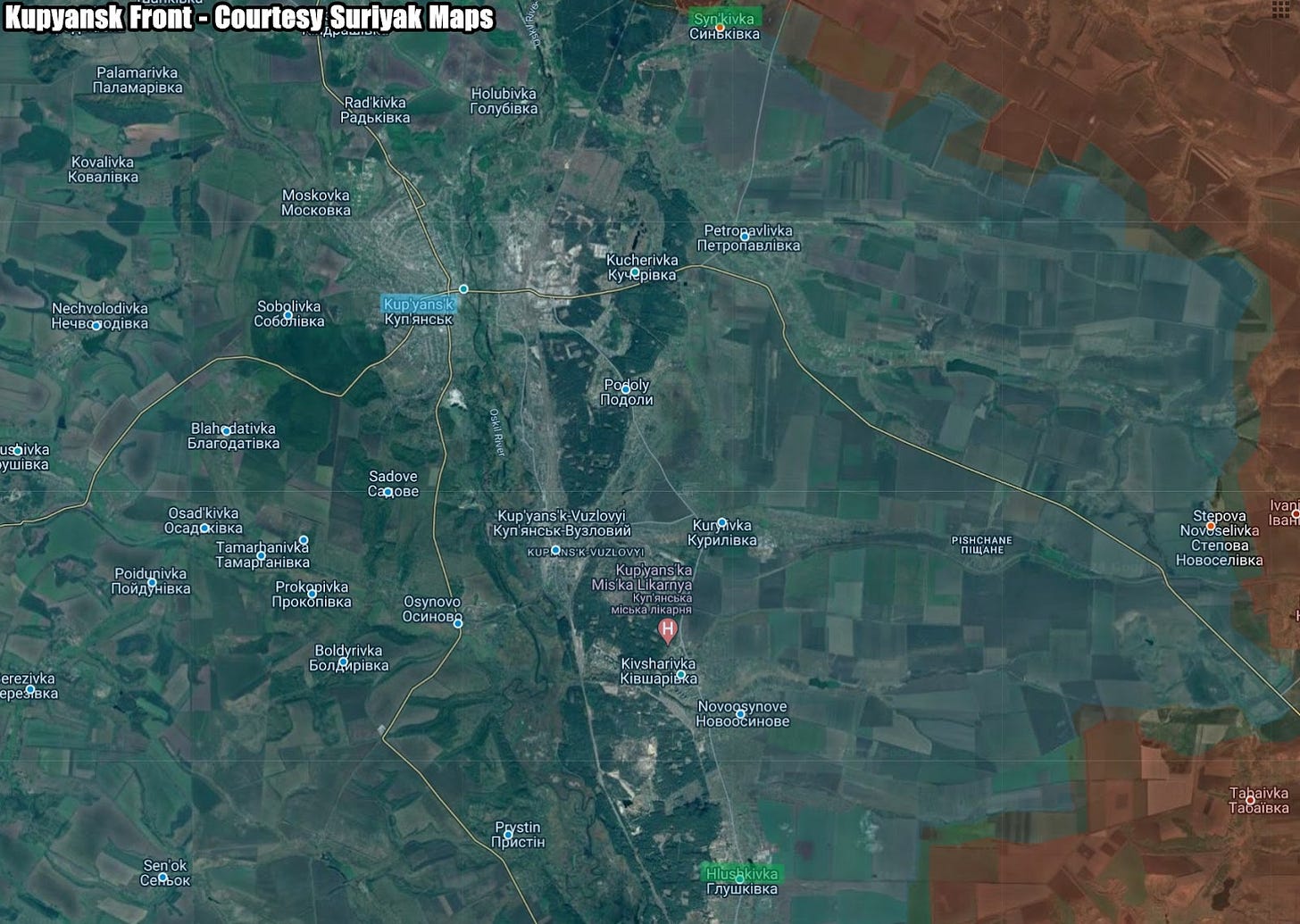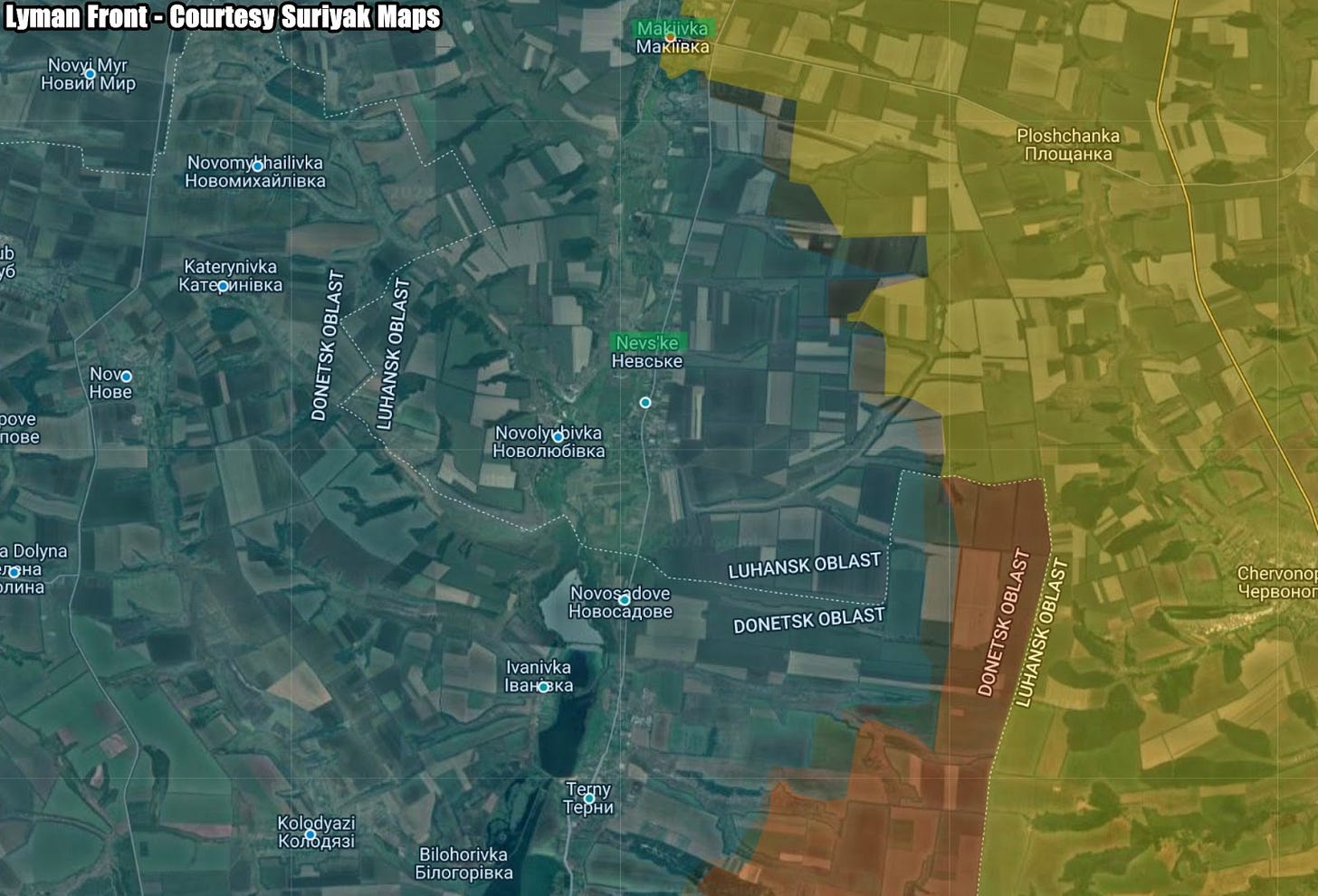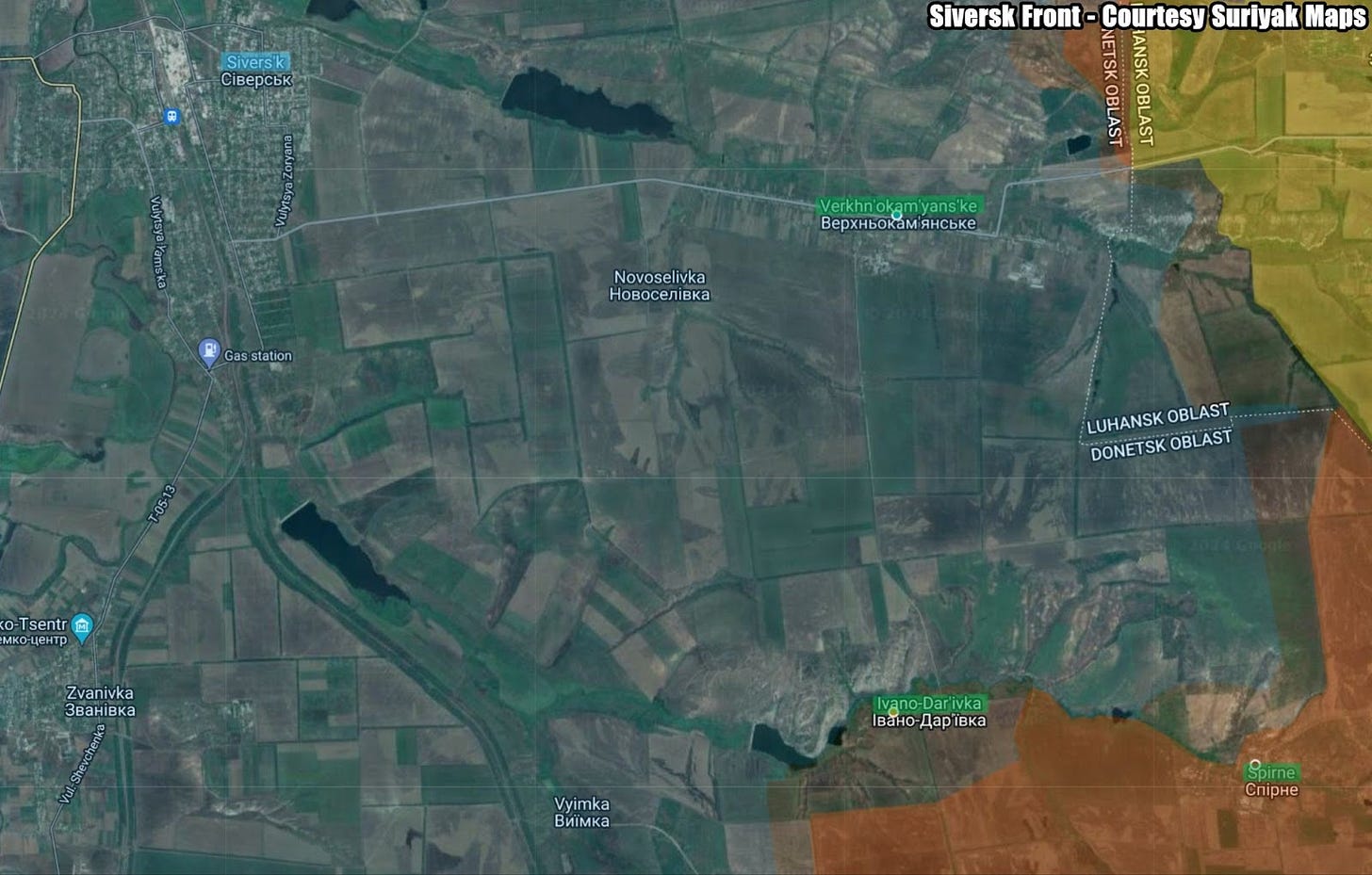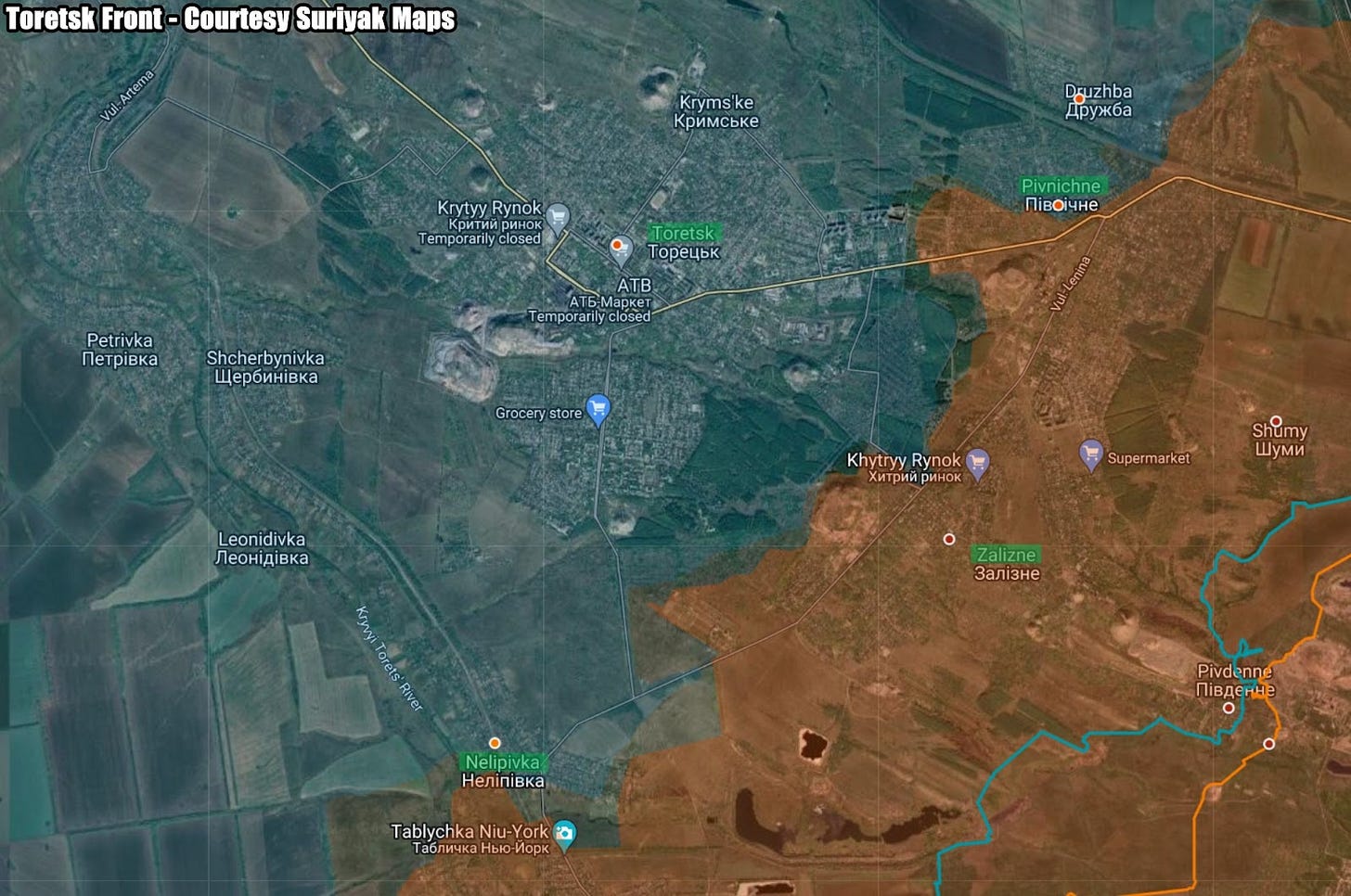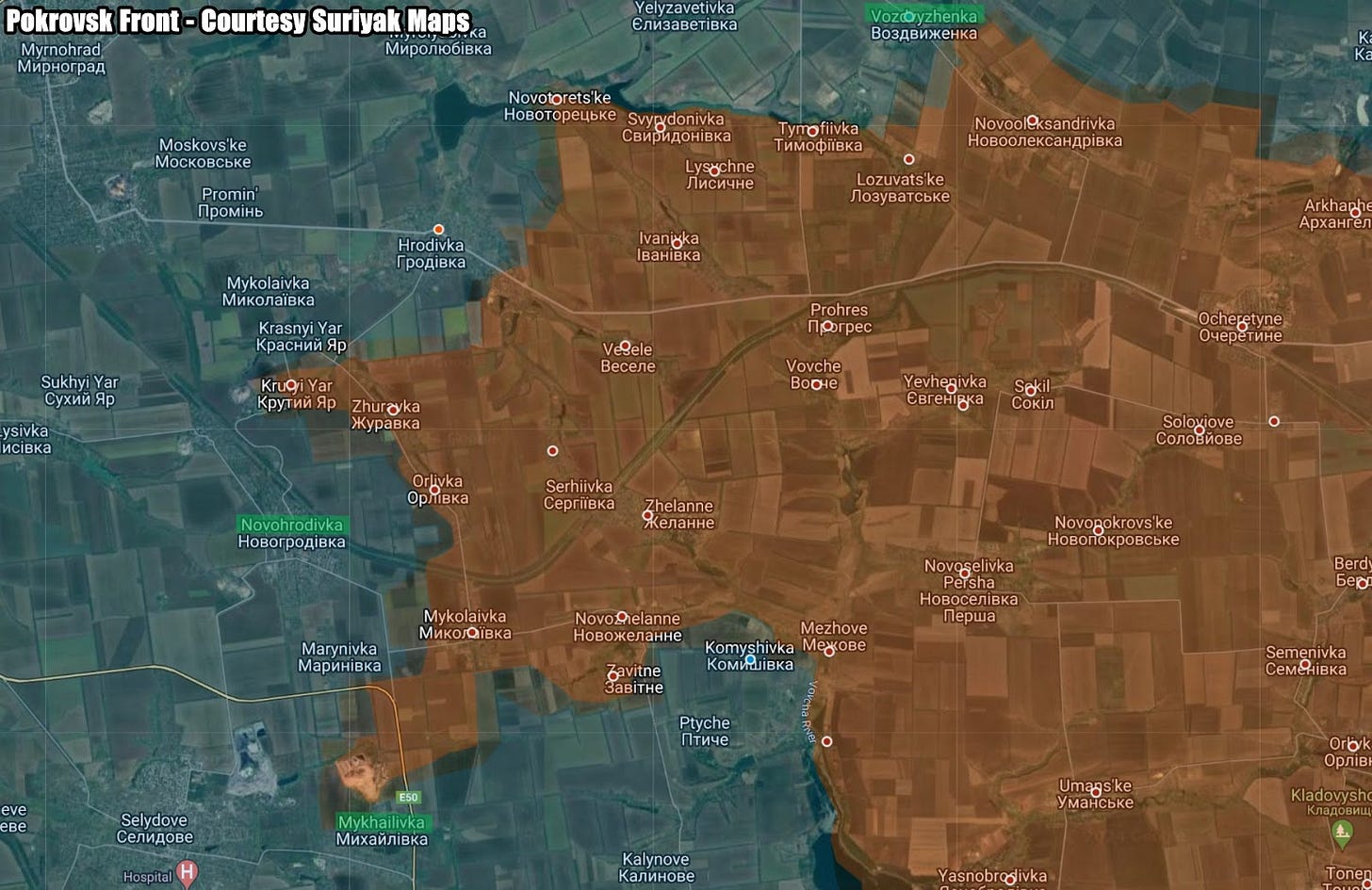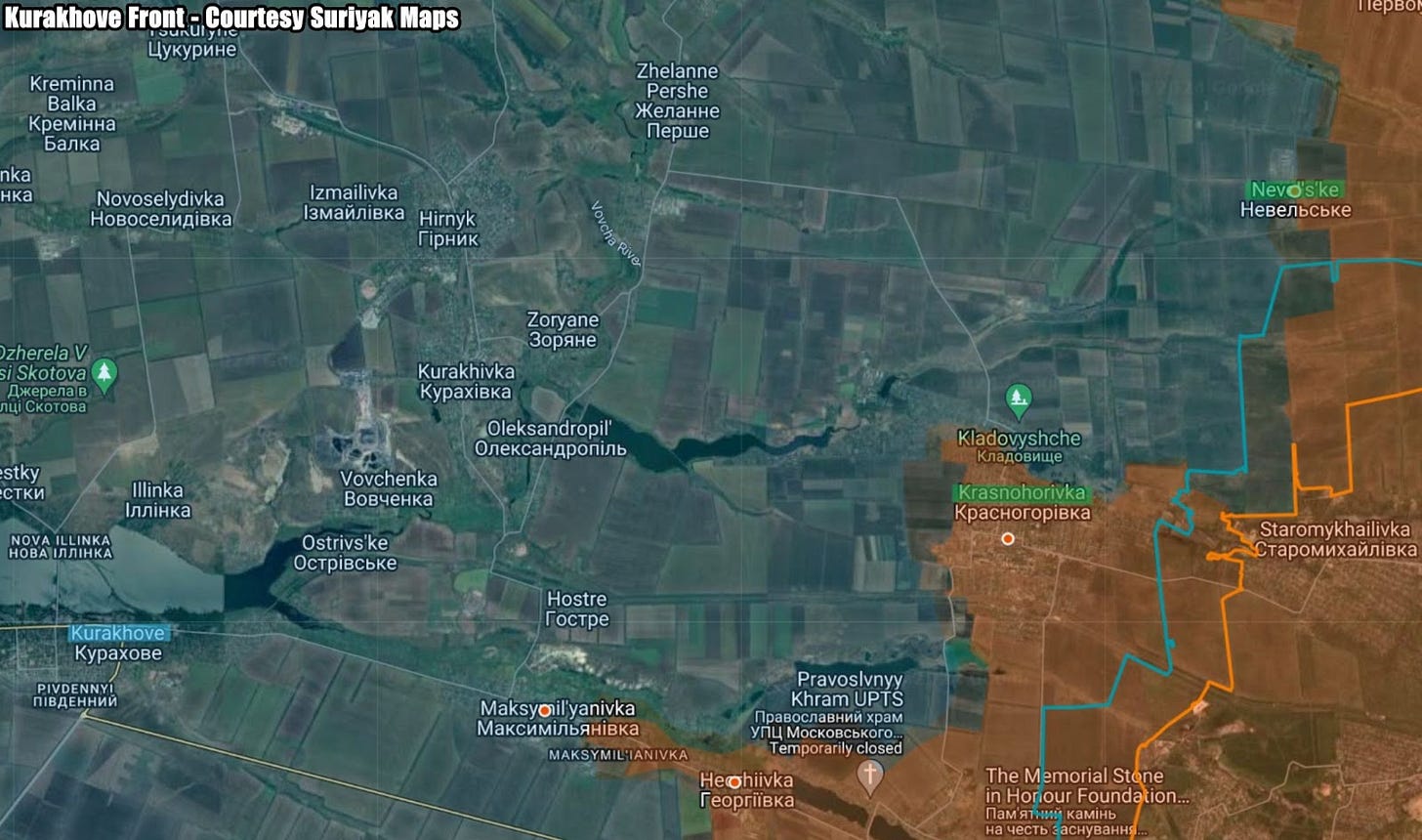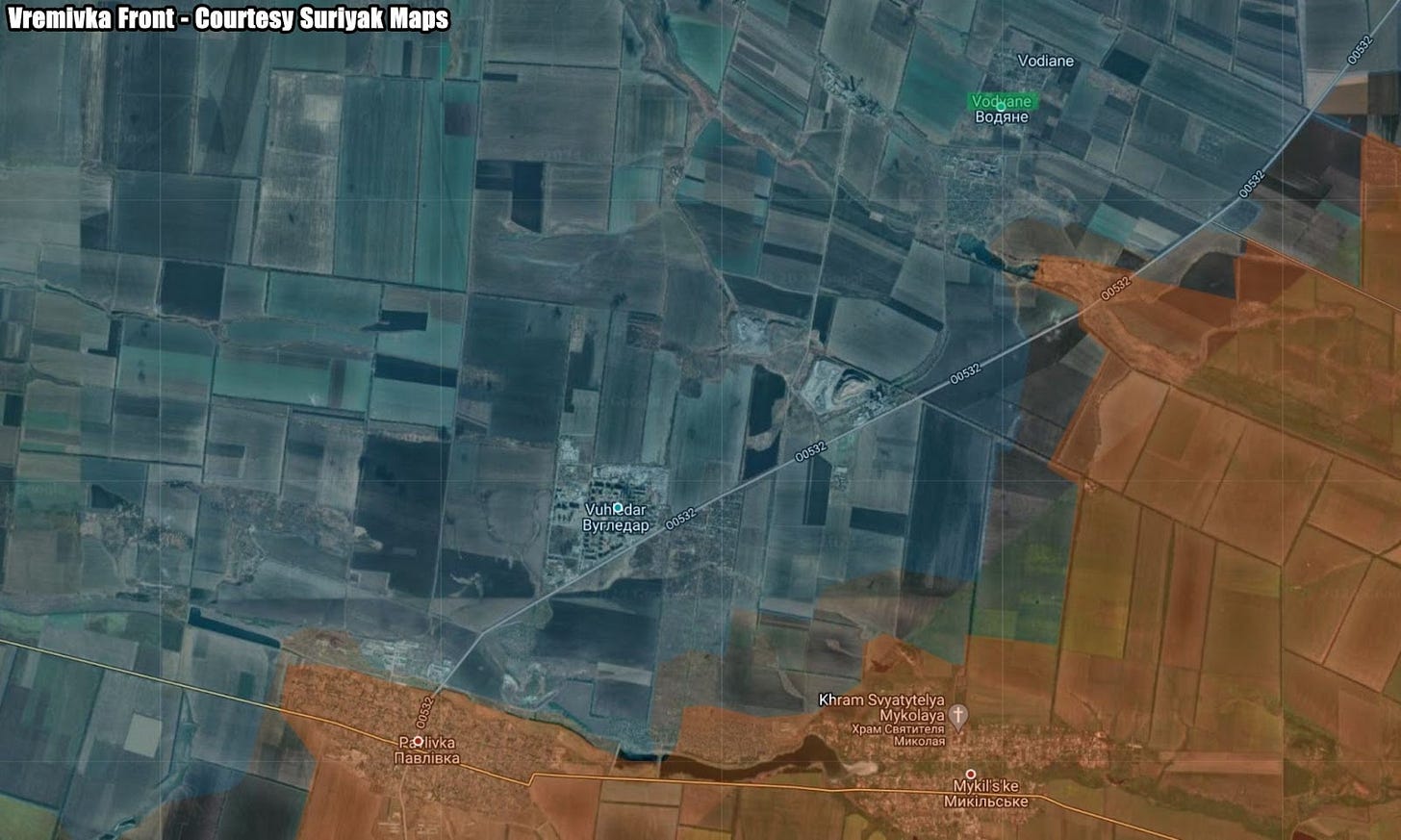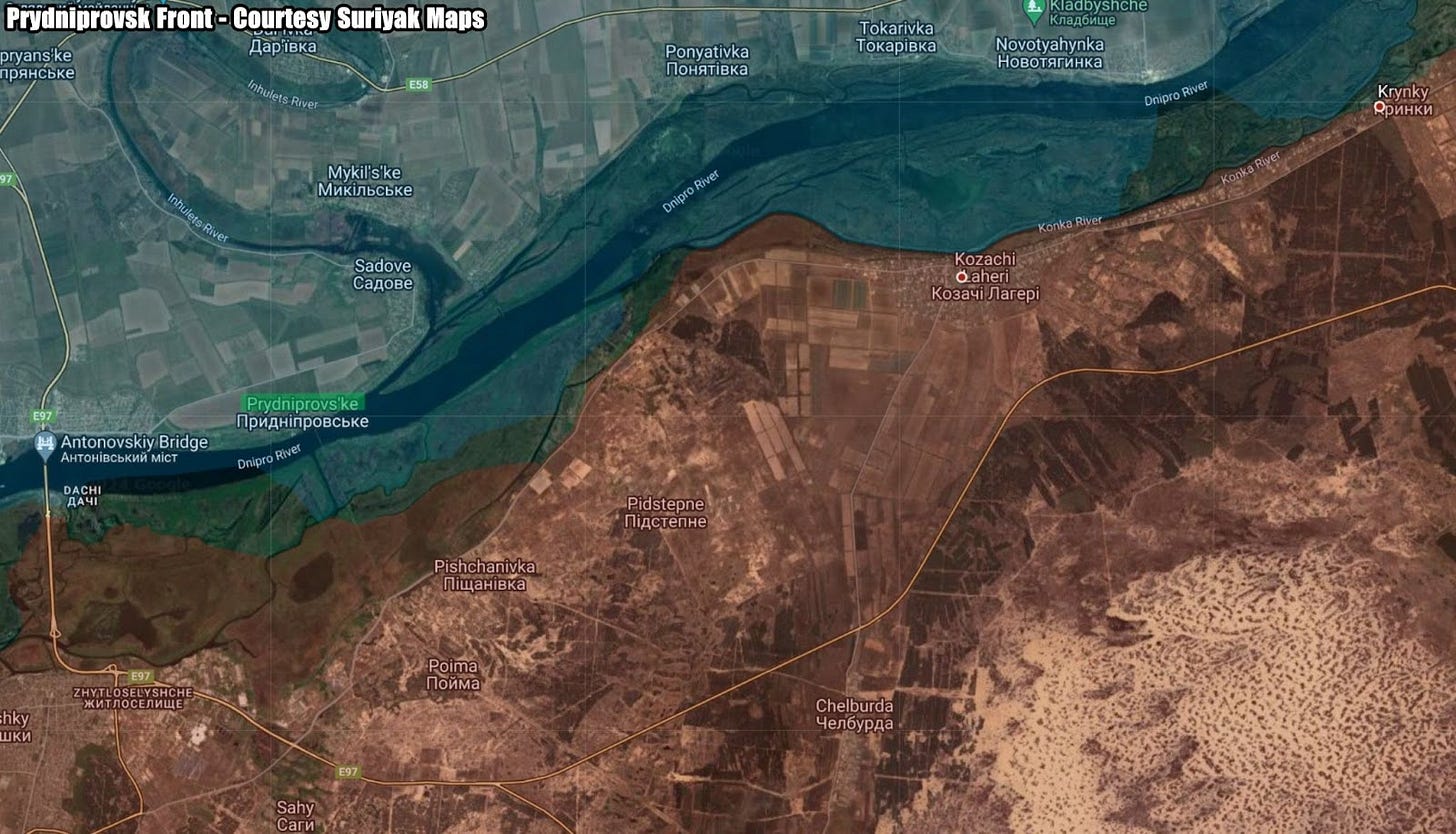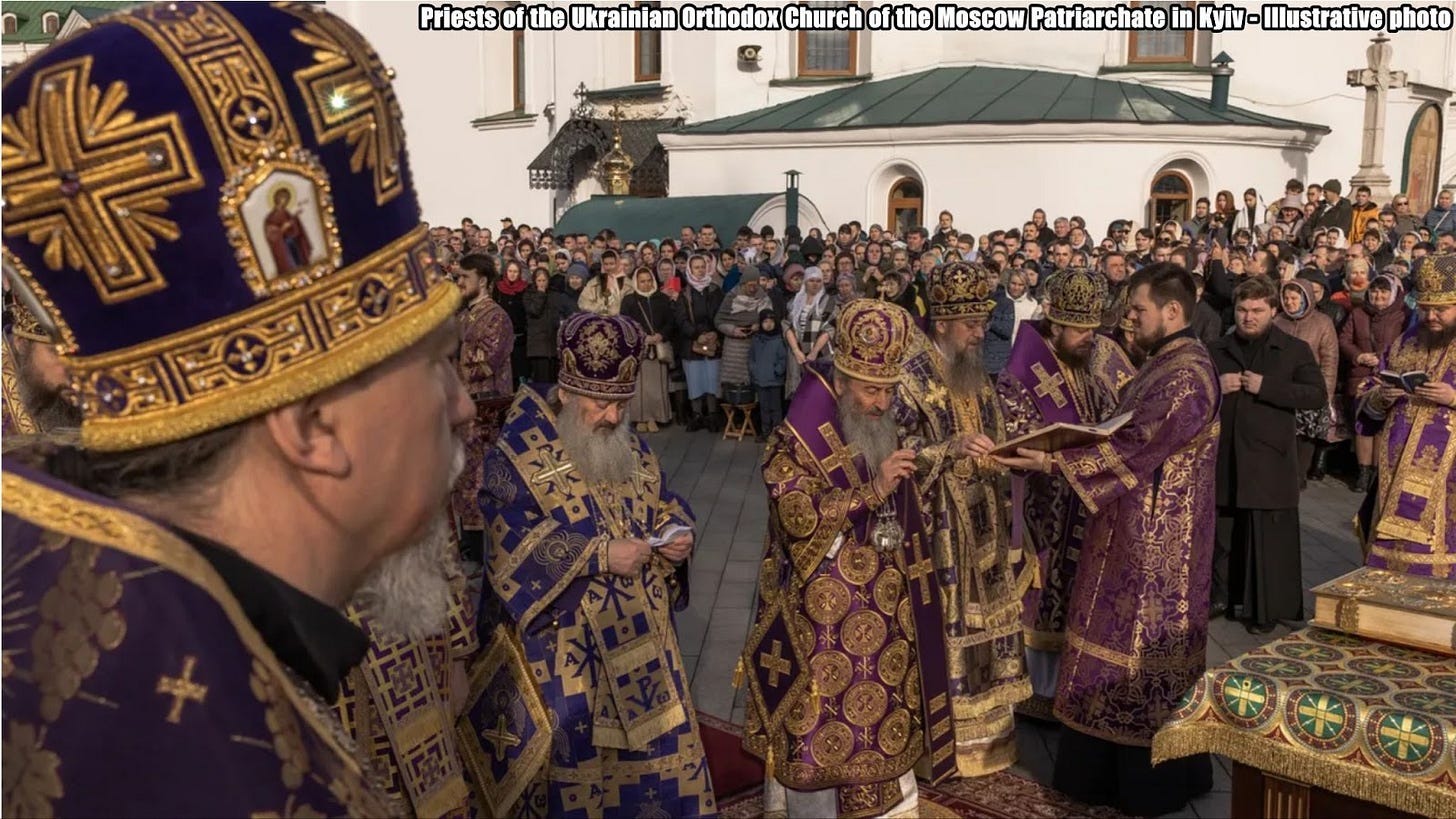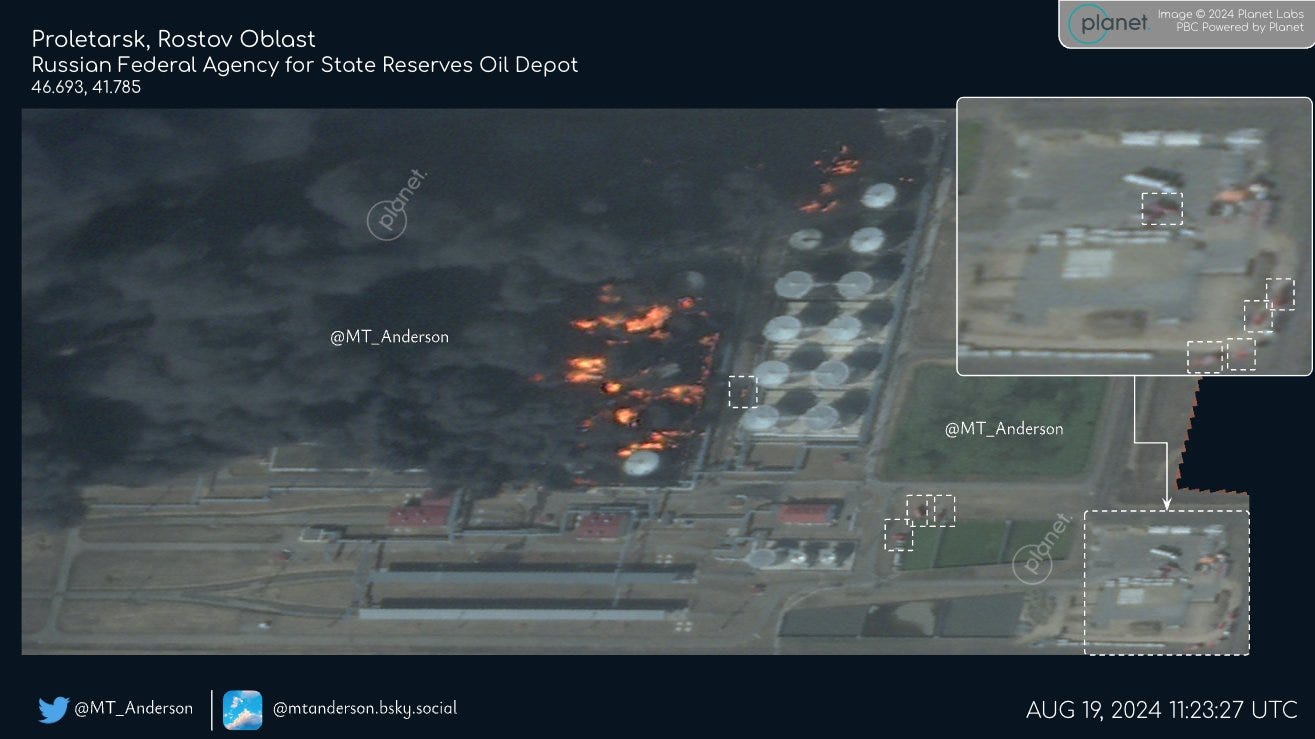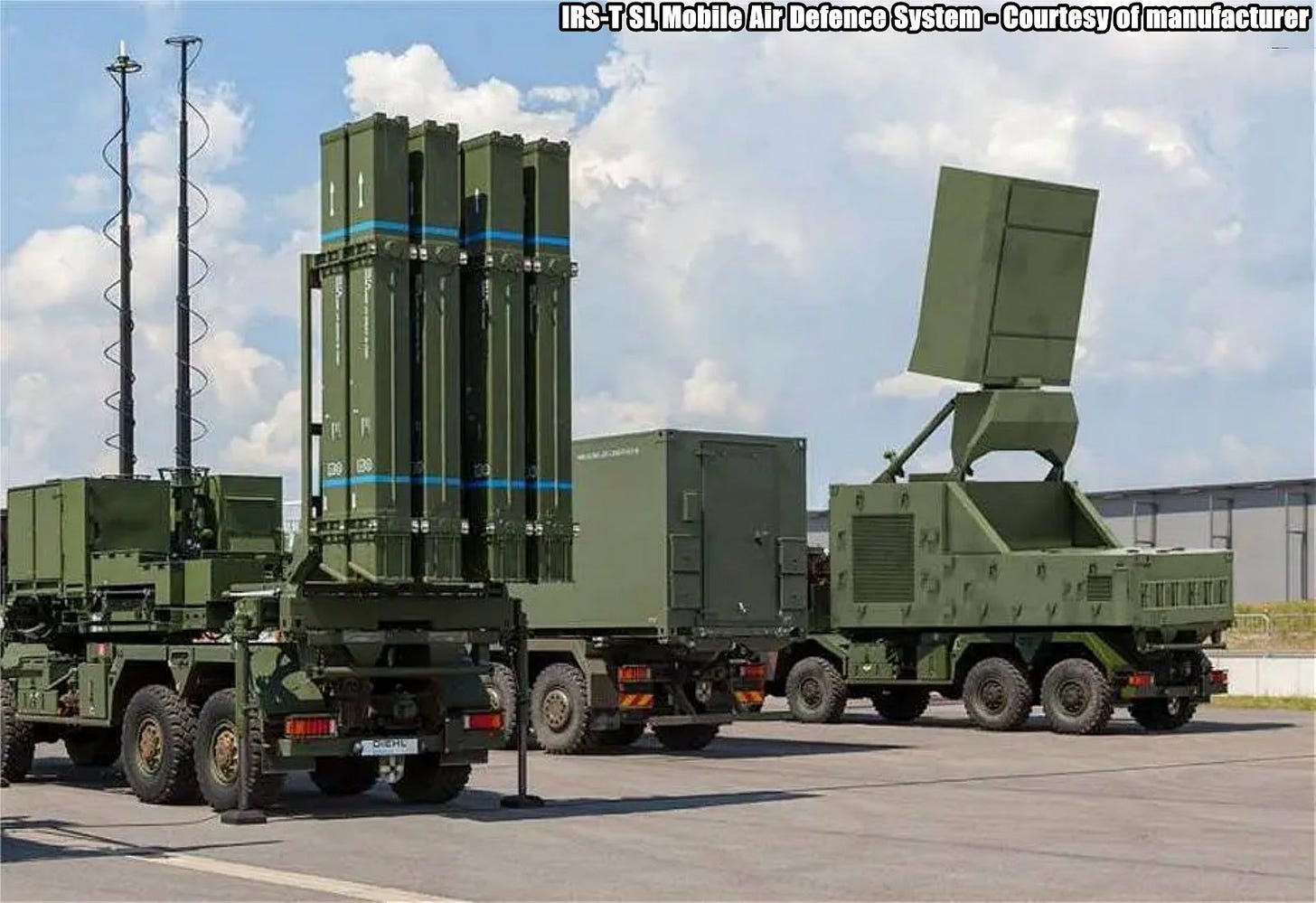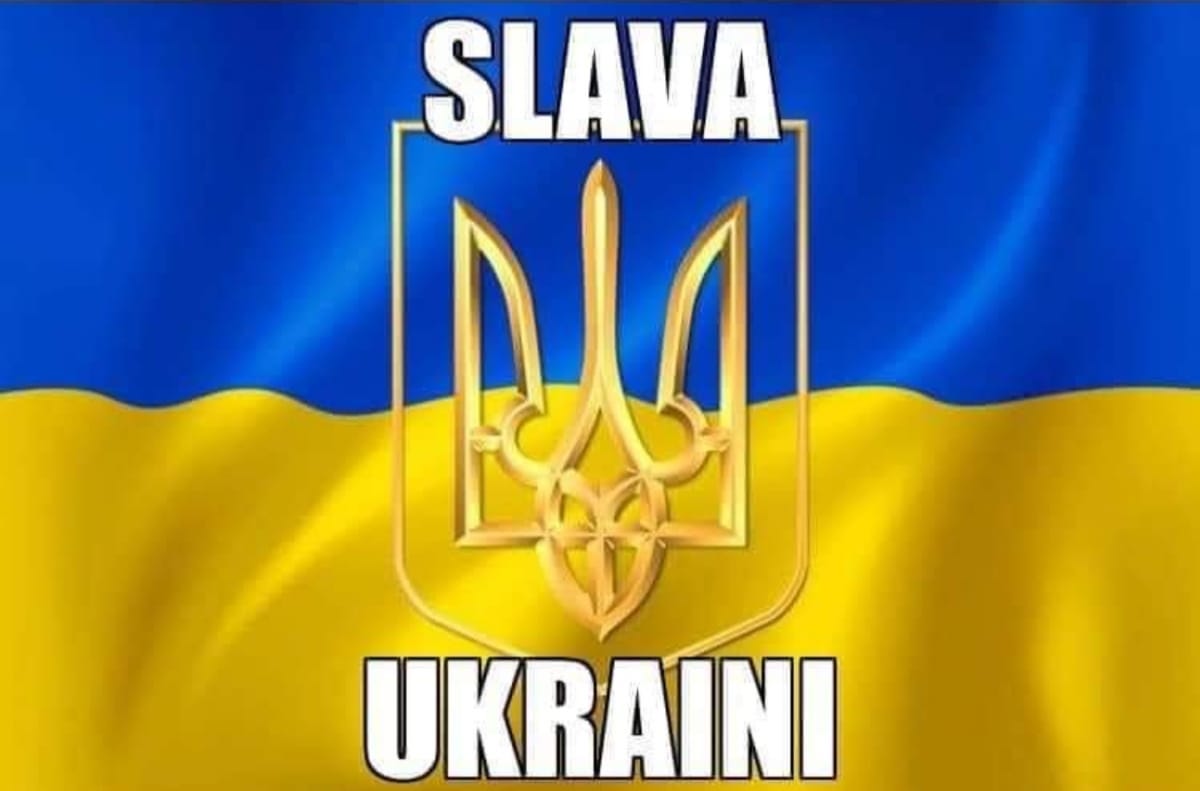Slava Ukraini! In early 2022 I began a Telegram channel aggregating news from a number of sources daily on the war in Ukraine. Since June 2023 I have provided a daily draft for the Ukraine War Brief Podcast collecting news from over 70 sources daily, much of which forms the basis of the script. While the Podcast is on hiatus I will make this Draft available here both on my own Substack and The People’s Media for those who wish to keep up with events on a daily basis.
All the latest news on the Russo-Ukraine War 6 days per week
ALONG THE CONTACT LINE
GSAFU Morning Report
The General Staff of the Armed Forces of Ukraine in its Operational Information update at 22:00 on Aug 19 stated that day 998 of the full-scale invasion of the Russian Federation against Ukraine was about to begin.
During the past day, 154 combat engagements took place. Over the past hours, the enemy carried out 71 air strikes, 629 drone strikes and more than 3,400 artillery strikes across the positions of Ukrainian forces.
At the same time, Ukrainian soldiers continue to inflict losses in manpower and equipment on the occupying troops, exhausting the enemy along the entire front line and continue to disrupt the plans of Russian occupiers to advance deep into the territory of Ukraine.
Air Force Daily Report
On the night of August 20, 2024, the enemy attacked with two Iskander-M /KN -23 ballistic missiles from the Voronezh region, an Iskander-K cruise missile from the Bryansk region, and Kh-59 guided air missiles from the airspace of the Kursk and Zaporozhye regions , as well as 26 strike UAVs of the "Shahed" type (launch areas - Primorsko-Akhtarsk, Yeisk, Kursk - Russian Federation).
As a result of anti-aircraft combat by aviation, anti-aircraft missile forces, mobile fire groups of the Defense Forces of Ukraine and electronic warfare units, 28 aerial targets were shot down: one Iskander-K cruise missile, two Kh-59 guided air missiles and 25 Shahed-131/ 136" within Kyiv, Dnipropetrovsk, Mykolaiv, Kherson, Vinnytsia, Khmelnytskyi, Kirovohrad, Sumy and Chernihiv regions.
The Russian Border Incursion
Ukraine continues to marginally advance in Kursk
The Institute for the Study of War (ISW), a US based think tank, in its Aug 19 Russian Offensive Campaign Assessment assessed that Ukrainian forces continued to marginally advance in Kursk Oblast on August 19 amid continued fighting throughout the Ukrainian salient in the area.
Geolocated footage published on August 19 indicates that Ukrainian forces advanced in Vishnevka (southwest of Koronevo and 14km from the international border). The Russian Ministry of Defense (MoD) claimed that Russian aviation and artillery struck Ukrainian forces operating near Vishnevka, potentially tacitly acknowledging that Ukrainian forces advanced in the area.
A prominent Kremlin-affiliated Russian milblogger claimed that Ukrainian forces also advanced within Russkoye Porechnoye (northeast of Sudzha and 17km from the international border), east of Agronom (just east of Sudzha and 15km from the international border), and east of Spalnoye (southeast of Sudzha and 5km from the international border).
The Russian MoD claimed that Russian forces repelled Ukrainian sabotage and reconnaissance attempts south of Skrylevka and Sheptukhova (both northeast of Korenevo and 22km from the international border), and other Russian sources claimed that fighting continued near Korenevo, Olgovka (just east of Korenevo), western Sudzha, and Martynovka (just northeast of Sudzha).
Elements of the Russian 810th Naval Infantry Brigade (Black Sea Fleet [BSF]) are reportedly operating near Olgovka; elements of the "Aida" Chechen Akhmat Spetsnaz group are reportedly operating in Sudzha; and the "Varangian" Reconnaissance-Strike Company of the 155th Naval Infantry Brigade (Pacific Fleet, Eastern Military District [EMD]) is reportedly operating in Kursk Oblast.
Russian milbloggers claimed that Ukrainian forces conducted an airstrike that destroyed a bridge over the Seim River in Karyzh (southwest of Korenevo) — the third and last bridge over the Seim River in Glushkovo Raion, Kursk Oblast. ISW has not yet observed evidence of a strike against a bridge near Karyzh, however. Geolocated footage published on August 16 and 18 showed Ukrainian strikes respectively destroying a bridge across the Seim River in Glushkovo and damaging a bridge across the Seim River in Zvannoye (southwest of Korenevo).
Zelenskyy gives an update on the Kursk Incursion
During a meeting in the city of Dnipro on Aug 19 Ukrainian President Volodymyr Zelenskyy gave an update on Kursk Incursion. He said that Ukraine continues to strengthen its positions, stabilise "certain areas" and continues to take Russian soldiers as POWs. the Kyiv Independent reported.
"This operation has become our largest investment in the process of releasing Ukrainians from Russian captivity. We have already captured the largest number of Russian prisoners in one operation," he said, without elaborating.
Ukraine declined to provide a full number of Russian captives taken during the Kursk incursion following the Kyiv Independent's request.
Zelensky said that "hundreds" of Russian soldiers had been captured as of Aug. 13, while an undisclosed Ukrainian colonel told The Independent news outlet that the number may be as high as 2,000.
Ukrainian forces are in control of 92 settlements and more than 1,250 square kilometres of Kursk Oblast in Russia as the incursion into the region continues, President Volodymyr Zelensky said on Aug. 19.
Ukrainian Air Force ramps up strikes in Russia’s Kursk Oblast
The Ukrainian Air Force is carrying out daily strikes targeting Russia's Kursk Oblast on a daily basis, Air Force Commander Mykola Oleshchuk wrote on Telegram on Aug. 20, posting a video of a recent attack.
It shows a Ukrainian fighter jet targeting an underground enemy control centre with an AASM Hammer guided bomb.
Oleshchuk posted a video of an airstrike on a bridge in Kursk Oblast on Aug. 16. He did not specify the strike's exact location, but the Russian authorities acknowledged that the Ukrainian forces had destroyed the bridge over the Seym River in the Glushkovsky district.
The Khortytsia operational-strategic group
(Responsible for the northeastern part of Ukraine. )
Kharkiv axis: There were 4 Russian attacks over the last day near Lyptsi and Vovchansk, 1 attack is ongoing.
Kupyansk axis: The enemy carried out 13 attacks against Ukrainian positions near Sinkivka and Hlushkivka
Lyman axis: Russia attacked 11 times unsuccessfully in this sector, mainly near the settlements of Makiivka, and Nevske.
Siversk axis: Russian forces carried out 8 unsuccessful assaults in the vicinity of Verkhnokamianske, Sprine and Ivano-Darivka. 1 engagement continues.
Kramatorsk axis: Russian forces carried out 5 unsuccessful offensive actions near Ivanivske and Andriivka.
Toretsk axis: There have been 21 Russian attacks over that last day with air support. All the efforts of the enemy were directed to the areas of Pivnichne, Toretsk, Zalizne and Nelipivka. 5 battles continue.
The Tavria operational-strategic group
(Responsible for the central-eastern and southeastern part of Ukraine.)
Pokrovsk axis: The greatest activity of the enemy today occurred in the Pokrovsk sector. The enemy conducted 63 attacks against Ukrainian defences in this area over the last day concentrating in the vicinity of Vozdvizhenka, Novohrodivka and Mykolaivka. 3 engagements are ongoing.
Kurakhove axis: Russian forces unsuccessfully tried to advance 11 times in the area of Nevelske and Krasnohorivka.
Vremivka axis: In this sector the situation is under control, Russian forces made 5 unsuccessful assaults against Ukrainian positions near Vodiane.
Orikhiv axis: The situation in this sector has not changed significantly.
The Odesa operational-strategic group
(Responsible for Kherson, Qırım, (also known as Crimea) and the Black Sea.)
Prydniprovsk axis: In this sector, over the last day, the situation has not changed significantly. Russian forces made 1 unsuccessful attempt to force Ukrainian units from their positions on the left bank of the Dnipro.
TEMPORARILY OCCUPIED TERRITORIES
Nothing to report.
THE HOME FRONT
Verkhovna Rada bans Russian-linked religious organisations
The Ukrainian Parliament adopted a bill banning the activities of religious organisations linked to Russia, in particular the Ukrainian Orthodox Church-Moscow Patriarchate (UOC-MP), European Solidarity Party MP Oleksiy Honcharenko reported on Aug. 20 New Voice reports.
"Historic decision!" – Honcharenko wrote on Telegram, explaining some of the bill's provisions:
Establishes restrictions for religious organisations associated with the Russian Orthodox Church, whose activities are banned in Ukraine
Determines what exactly is meant by the term "related to the Russian Orthodox Church
Sets a deadline for Ukrainian religious organisations to sever these ties
Establishes the procedure for state monitoring of compliance with this requirement
Establishes the procedure for state monitoring of compliance with this requirement
Authorises state bodies to interact with religious organisations that have been unable or unwilling to meet the law's requirements on their own.
The law will come into force 30 days after its publication, said Voice Party MP Yaroslav Zheleznyak.
The UOC-MP will have 9 months to sever ties with the Russian Orthodox Church.
RUSSIAN WORLD
Russia continues to struggle with the issue of using conscripts in Kursk
The Institute for the Study of War (ISW), a US based think tank, in its Aug 19 Russian Offensive Campaign Assessment stated that Chechen Akhmat Spetsnaz Commander Apty Alaudinov aggravated a situation that the Kremlin has historically treated with extreme caution by calling for conscripts to participate in combat operations in Kursk Oblast and dismissing concerns from relatives of conscripts.
Alaudinov responded in a video message on August 19 to the "sobs and outbursts" about Russian conscripts fighting in Kursk Oblast, complaining that parents of conscripts are treating 18-year-olds as children.
Alaudinov claimed that Russian conscripts are employees of the Russian Ministry of Defense (MoD) and must defend Russia. Alaudinov complained that conscripts are just "eat[ing] the state's bread for free ... and then go home." Alaudinov responded to complaints that conscripts are paid little, calling on conscripts to sign a contract with the MoD if they want to receive higher salaries. Alaudinov called for all Russians young and old to "stand in formation" since "the enemy has come to [Russia], stating that "no one will die who is not destined to die, but if you die defending [Russia] and your faith in God, you will go to heaven." A Telegram channel associated with the Akhmat "Aida" group also claimed on August 19 that the conscripts they have encountered in Sudzha, Kursk Oblast are not 18-year-olds, but 21-to-25-year-olds.
Family members of Russian conscripts have recently complained about the involvement of Russian conscripts in Russian border-defence operations.The Kremlin has shown great concern about societal backlash regarding issues concerning conscripts, and Russian President Vladimir Putin has previously taken action to appease the complaints of conscripts' relatives. The continued presence of Russian conscripts in the border areas during the Ukrainian incursion threatens the Kremlin with a potential political crisis regarding casualties among Russian conscripts. Alaudinov has postured himself as a spokesperson for the Russian defence in Kursk Oblast, and Russian newswire TASS has repeatedly amplified his statements following the Ukrainian incursion.
Blatant calls from Alaudinov — a widely promoted Russian authority — for conscripts’ relatives to stop complaining, for conscripts to participate in combat operations in Russia’s border area, and for Russian citizens to embrace casualties among conscripts and other servicemembers may exacerbate tensions in Russian society and potentially threaten the stability of Putin’s regime. Chechen Republic Head Ramzan Kadyrov has notably made only limited public statements about the Ukrainian incursion in Kursk Oblast, despite Alaudinov's and Akhmat Spetsnaz's pronounced roles in the Russian response.
Massive fire rages for third day following drone strike on Russian oil depot
Kavkaz oil depot in Russia's Rostov Oblast has been ablaze for three days, the fire scale has grown to 10,000 square metres, Proletarsky district governor Valery Gornich reported on Telegram on Aug. 20.
More than 500 firefighters are involved in extinguishing the fire, and four planes are being prepared to assist them.
According to the Baza Telegram channel, 22 fuel tanks are on fire and are expected to burn for several more days. The fire has not yet been contained, and water is constantly being poured between the tanks to prevent detonation.
The fire was reportedly caused by an overnight drone strike on Aug. 18, with the Ukrainian Armed Forces later confirming their attack and noting that the depot stored oil and oil products for the Russian army.
NEWS WORLDWIDE
Hungary remains defiant on easing entry requirements for Russians, Belarusians
A European Commission deadline for Hungary to respond to questions about the easing of entry requirements for Russian and Belarusian nationals expired on Monday (19 August). Euractiv reports.
Home Affairs Commissioner Ylva Johansson sent a letter to her Hungarian counterpart, Sándor Pintér, at the beginning of August requesting an explanation from Budapest about changes made to the country’s immigration scheme.
Under the recent changes, Hungary has eased requirements for Russians and Belarusians to enter the country to work, granting “guest workers” a stay of two years, renewable by an additional three years.
Although issuing long-stay visas and residence permits were a individual member state matter, Johannson stressed, “such schemes need to be carefully balanced not to put at risk the integrity of our common area without internal border controls and to duly consider potential security implications.”
“The extension of the facilitated processing of residence and work permit applications for citizens of Russia and Belarus could lead to a de facto circumvention of the restrictions the Union has imposed,” the letter added.
Johansson requested Budapest to reply to an annexe of questions “no later than 19 August”.
A European Commission spokesperson confirmed to Euractiv that as of Monday afternoon, there has yet to be a response.
Critics believe the changes could pave the way towards permanent residency, which, given the current tensions with both countries, could threaten the security of the bloc’s Schengen Area.
Eight Baltic and Nordic countries – Denmark, Estonia, Finland, Iceland, Latvia, Lithuania, Norway and Sweden – in a joint letter sent to Brussels last Thursday (15 August), seen by Euractiv, had expressed concern that Hungary’s ease of restrictions could increase the risk.
“Regardless of whether it falls under national or Union competence, we are worried that this decision may constitute a serious security risk to all member states,” the group of foreign, interior and justice ministers wrote.
Their request, however, was met with a strong response from Budapest, which dismissed the step as “plain lies“.
“The inclusion of Russian and Belarusian citizens in the National Card program does not pose any security risk from the point of view of the Schengen area since these persons must still undergo a comprehensive check to enter and stay in Hungary,” the country’s Foreign Minister Peter Szijjártó replied over the weekend.
“All claims to the contrary by Northern European and Baltic colleagues, who are blinded by their adherence to the pro-war camp, are plain lies,” Szijjártó said.
Frozen Russian asset proceeds to supply Ukraine with ammo via Czech initiative
On 20 August, Czech Defense Minister Jana Černochová announced on X (formerly Twitter) that the EU decided that part of the income from frozen Russian assets within the European Union will be allocated to supply large-calibre ammunition to Ukraine. Euromaidan Press reports.
The Czech ammunition initiative sources artillery ammunition from countries outside the European Union. About 20 countries fund the effort, aiming to deliver 500,000 shells to Ukraine by the end of the year. The first shipment, consisting of approximately 50,000 shells, was delivered to Ukraine earlier this summer. Also, Czechia launched a second project, Initiative-2025, to purchase ammunition for Ukraine from five Czech arms companies.
Černochová highlighted that this decision will enable the purchase of hundreds of thousands of large-calibre munitions for Ukraine, bolstering its artillery capabilities amid the ongoing Russo-Ukrainian war. She emphasised that this decision reflects the trust of European allies in the Czech Republic’s ammunition initiative and represents a unique opportunity to support Ukraine while utilising resources originally belonging to Russia, thereby saving European public funds.
MILITARY & TECH
Strykers help Ukraine achieve breakthrough in Kursk
U.S.-donated Stryker armoured vehicles have played a pivotal role in Ukraine’s ongoing military operations in the Kursk region, according to defence industry analyst and consultant Nicholas Drummond wrote on Twitter.
Writing on Twitter, Drummond highlighted the effectiveness of these vehicles in delivering Ukrainian infantry units with speed and surprise, achieving what he described as a “schwerpunkt” effect—a concentrated attack that breaks through enemy defences.
The Stryker vehicles, part of a $2.5 billion U.S. military aid package announced on January 20, 2023, have significantly enhanced the mobility and tactical capabilities of Ukraine’s forces. The package included 90 Stryker armoured personnel carriers (APCs) and 20 Light Weight Mine Rollers (LWMR), which are designed to clear paths through minefields.
“The Strykers have allowed dispersed units to deliver infantry mass with speed and surprise, achieving a schwerpunkt effect,” Drummond wrote. He also noted that the vehicles’ thermal sensors have provided Ukrainian commanders with a decisive advantage on the battlefield. These sensors enable the detection of Russian forces beyond their ability to detect Stryker units, allowing for the swift execution of coordinated attacks.
82nd Air Assault Brigade receives FN Minimi light machine guns
The Come Back Alive Foundation, together with Ukrnafta, has delivered a batch of machine guns to the soldiers of the 82nd Air Assault Brigade. Militarnyi reports.
The Foundation reported that 40 FN Minimi machine guns were purchased for the paratroopers of this unit.
Their cost is UAH 25,267,620, and this is not the only contribution of Ukrnafta to arm the 82nd Air Assault Brigade, the Foundation shared.
“Together with Ukrnafta, we have transferred 40 FN Minimi machine guns to the 82nd separate air assault brigade, which is currently participating in an offensive in the Kursk region,” the Come Back Alive Foundation team noted.
The Foundation noted that Ukrainian paratroopers had received this time-tested and war-torn weapon before the operation and were already actively using it during assaults, cutting off and eliminating enemy infantry.
Germany to hand over four more IRIS-Ts to Ukraine by end of this year
Wolfgang Büchner, Deputy Spokesperson for the German government stated that Germany plans to supply Ukraine with four more IRIS-T air defence systems by the end of the year. Ukrainska Pravda reported.
"Germany remains absolutely committed [to Ukraine], and the chancellor [Olaf Scholz] gives his word that support for Ukraine will continue as long as necessary, and no one, especially the Russian president [Vladimir Putin], can hope that we will weaken our commitment."
That’s it for today’s Draft folks if you would like to keep up with events in Ukraine daily please consider subscribing, its free!
Feel free to share this update with your friends. Heroyam Slava!







